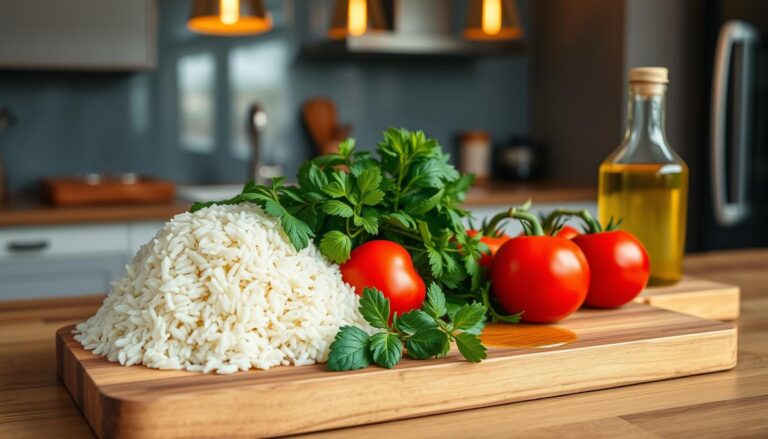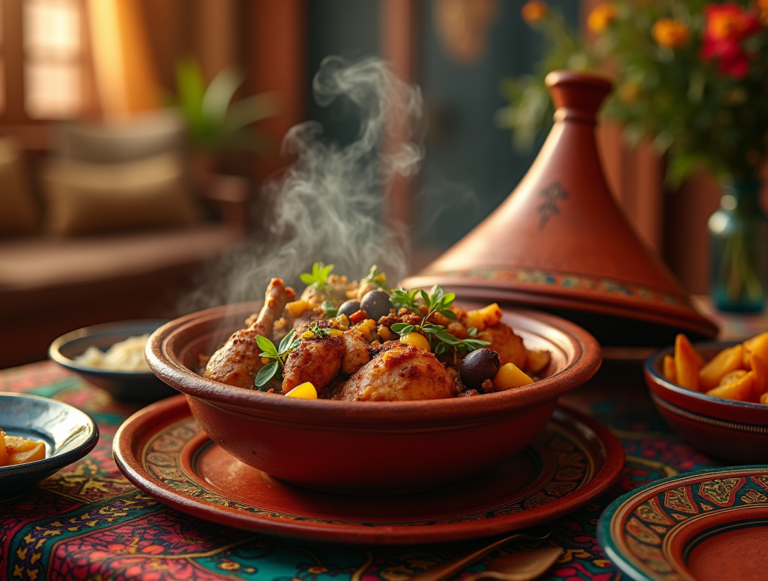Easy Stew Meat Recipe for Tender, Hearty Comfort Food
Winter winds howl outside, and nothing beats the warmth of a stew meat recipe. I remember my grandmother’s kitchen filled with the smell of slow-cooked beef. It was a sign of comfort and nourishment on cold nights.
This stew meat recipe is more than a meal; it’s a journey that turns simple ingredients into a hearty dish. It’s perfect for both seasoned cooks and kitchen novices. It promises a delicious meal that brings families closer.
With a few key ingredients and patience, you’ll make a flavorful stew. It’s packed with tender meat and memories waiting to be made. Get ready to make an ordinary dinner into an extraordinary experience that touches your heart.
https://adam-corner.com/the-best-chuck-roast-recipes/
Key Takeaways
- Perfect for cold weather comfort meals
- Easy to prepare with minimal cooking skills
- Nutritionally balanced one-pot meal
- Freezer-friendly and great for meal prep
- Customizable with various ingredient options
- Feeds a crowd with 8 generous servings
Understanding the Perfect Stew Meat Recipe
Creating a great beef stew starts with knowing the key elements. You need to pick the right meat, use the best cooking pot, and gather top ingredients. This will help you make a delicious meal.
Best Cuts of Meat for Stewing
Not all beef cuts are good for stew. The best ones are rich in marbling and tough. This makes them tender when cooked slowly. Here are some top picks:
- Boneless beef chuck roast
- Bottom round
- Brisket
These cuts have a lot of connective tissue. This tissue breaks down during slow cooking, making the meat tender. It’s best to use big chunks, about 1.5 to 2 inches, to keep the meat moist and tender.
Essential Equipment Needed
A Dutch oven is the best for making beef stew. It cooks evenly and can go from stovetop to oven. Its thick walls keep the temperature steady, which is key for rich flavors.
Key Ingredients Overview
The success of your beef stew depends on the ingredients you choose. Here are the basics:
| Ingredient Category | Recommended Options |
|---|---|
| Protein | Chuck roast, cut into 1.5-2 inch chunks |
| Liquid | Low-sodium chicken stock, dry red wine |
| Vegetables | Yukon gold potatoes, carrots, onions |
| Thickener | 2 tablespoons flour per 5 cups liquid |
By knowing these basics, you’ll be ready to make a delicious beef stew. It will be a dish that warms your heart and fills your belly.
The Secret to Tender Beef in Your Stew
To make tough beef tender, you need to know a few tricks. It’s all about slow cooking and the right tenderizing methods. This turns tough cuts into a dish that just melts in your mouth.
https://youtube.com/shorts/pNR7D1_NbMs?si=oDu4mfv3rLEN9HDl
First, pick the right beef for your stew. Cuts like chuck, bottom roast, and brisket are great. They’re full of connective tissue that softens during slow cooking. Plus, they’re cheaper and taste amazing.
- Bring meat to room temperature before cooking
- Use a gentle meat tenderizer technique
- Maintain a low and slow cooking approach
The key to tender beef is slow cooking. Cooking at 284°F to 320°F for four to six hours breaks down collagen. This turns tough meat into tender, juicy pieces. It’s like the beef is swimming in a flavorful pool of liquid, keeping it moist.
Pro tip: Always add beef to a gentle simmer, not boiling liquid, to prevent toughening the meat.
Natural tenderizers like wine or tomato paste can also help. They break down muscle fibers, making the beef tender. Remember, making a great stew takes time. But it’s worth it when everyone wants more.
Essential Ingredients for a Flavorful Broth
Creating a rich winter dish starts with the right ingredients. These ingredients turn an ordinary stew into a memorable meal. The secret is in choosing the right mix that adds depth and complexity to your savory broth.
Aromatic Vegetables and Herbs
Your stew’s foundation is built on aromatic vegetables that add incredible flavor. Here are the essential ingredients:
- 1 large sweet onion, finely chopped
- 2 large carrots, peeled and cut into chunks
- Fresh herbs like thyme and bay leaf
- 2 teaspoons of herbs de Provence
Wine and Stock Selection
The right liquid base can make your winter dish stand out. Professional chefs suggest:
| Ingredient | Quantity | Purpose |
|---|---|---|
| Beef Stock | 3 cups | Rich flavor foundation |
| Red Wine | 1/2 cup | Depth and complexity |
| Better Than Bouillon Roast Beef Base | 3 tablespoons | Intense beef flavor |
Seasoning Guidelines
Balanced seasoning turns a simple stew into a culinary masterpiece. Your savory broth needs precise seasoning:
- 3/4 teaspoon kosher salt
- 1/2 teaspoon freshly ground black pepper
- 1/2 teaspoon garlic powder
- 1-2 tablespoons aged balsamic vinegar
By carefully choosing and mixing these ingredients, you’ll make a winter dish that warms both body and soul. Your savory broth will tell a delicious story of comfort and care.
Step-by-Step Meat Preparation Techniques

Starting a great stew meat recipe means careful meat prep. Choose 3 pounds of well-marbled boneless chuck roast. This cut is perfect for flavor and tenderness in your beef stew.
Here are the key steps to prepare your stew meat:
- Trimming: Remove excess fat, but leave some for rich flavor
- Cutting: Slice beef into uniform 2-inch chunks for even cooking
- Seasoning: Generously season with kosher salt and coarsely ground black pepper
- Drying: Pat meat dry with paper towels to ensure perfect browning
Experts say to use 1 teaspoon of kosher salt and ½ teaspoon of black pepper for every 2 pounds of beef. The secret to a great beef stew is meat of the same size. This ensures even cooking and tenderness.
Pro Tip: Invest time in proper meat preparation – it’s the foundation of an outstanding stew!
Cut your meat just before cooking for the best results. This keeps moisture in and juices intact. Paying attention to these steps will make your stew unforgettable.
Mastering the Art of Browning Meat
Creating a truly remarkable one-pot wonder starts with perfecting the art of browning meat. This step turns an ordinary stew into a hearty meal. It’s packed with deep, rich flavors that will tantalize your taste buds.
Browning meat isn’t just about color – it’s about developing a delicious crust. This crust locks in flavor and creates complexity in your dish. The key is to approach this process with patience and precision.
Temperature Control Tips
Achieving the perfect brown requires careful temperature management. Here are some essential tips:
- Use a heavy-bottomed pan that distributes heat evenly
- Preheat your pan to medium-high heat
- Ensure meat is pat dry before browning
- Avoid overcrowding the pan to prevent steaming
Proper Searing Methods
Searing meat is an art that can elevate your one-pot wonder from good to extraordinary. Follow these crucial techniques:
- Cut meat into uniform 1-2 inch chunks for even cooking
- Pat meat dry with paper towels to remove excess moisture
- Add meat in small batches to maintain high pan temperature
- Cook each side for 2-3 minutes until a golden-brown crust forms
Pro tip: Allow meat to rest at room temperature for 15-20 minutes before browning to ensure optimal results.
The secret to a truly memorable hearty meal lies in taking the time to brown your meat correctly.
Creating the Perfect Vegetable Blend

Making the perfect vegetable blend can turn your winter dish into something special. The right mix of veggies adds depth and nutrition. It makes every spoonful a joy to eat.
Choose classic, hearty veggies that can cook for a long time. Your mix should include:
- Potatoes: Give a creamy texture and substance
- Carrots: Add sweetness and color
- Celery: Bring subtle flavor and aroma
- Onions: Create a deep, rich flavor
Adding veggies at the right time is key. Harder veggies like carrots and potatoes go in first to get tender. Add delicate veggies like peas last, in the last 15-20 minutes, to avoid overcooking.
Pro tip: Cut veggies into uniform 1-1.5 inch chunks for even cooking and optimal texture.
For a standout winter dish, add seasonal veggies like parsnips, turnips, or butternut squash. They bring unique flavors that will wow your guests.
Professional Tips for Rich Stew Gravy
Making a luxurious savory broth is key to a great stew. The right methods can turn a simple dish into a feast that wows your guests.
Mastering Gravy Thickening Techniques
Getting the right consistency in your stew is crucial. Here are some expert tips:
- Use 2 tablespoons of flour for every 4 cups of broth
- Create a smooth slurry by mixing cornstarch with cold water
- Gradually add thickening agents to avoid lumps
- Simmer the stew for 10-15 minutes after thickening
Balancing Seasonings Like a Pro
Seasoning is an art in making the perfect stew. Start with a light touch and add layers of flavor as you cook.
Experts say to taste and adjust seasonings in stages. A pinch of salt, a dash of herbs, and careful monitoring can elevate your savory broth from good to extraordinary.
Final Flavor Enhancement Tips
- Add a tablespoon of cold butter at the end for richness
- Use fresh herbs for bright, vibrant flavors
- Consider a splash of red wine to deepen the broth’s complexity
- Let the stew rest for 15 minutes before serving to meld flavors
By using these expert techniques, you’ll make a stew with a velvety, rich gravy. It will have everyone asking for more.
Slow Cooking Time and Temperature Guide

Learning to slow cook in a Dutch oven is key. It’s about finding the right time and temperature for a delicious stew. Your slow cooking skills will turn tough meat into a tender, flavorful dish that’s a joy to eat.
When slow cooking in a Dutch oven, you have two main temperature options:
- Low Temperature Setting: 7.5 to 8 hours of cooking
- High Temperature Setting: 3.5 to 4 hours of cooking
Patience is the secret to perfect slow cooking. Your Dutch oven cooks with gentle, steady heat. This heat breaks down meat fibers and brings out rich flavors. Always choose the low and slow method for the best tenderness.
| Cooking Method | Temperature | Cooking Time |
|---|---|---|
| Slow Cooker Low | Low Heat | 7.5-8 hours |
| Slow Cooker High | High Heat | 3.5-4 hours |
For the best slow cooking results, check your stew often. Make sure it has enough liquid to avoid burning. The Dutch oven’s tight lid keeps moisture in and flavors deep during the long cooking time.
Storage and Reheating Guidelines
Keeping your comfort food fresh is important. After you’ve enjoyed your meal, storing it right can help you enjoy it for days. Your stew can stay good in the fridge for up to 3 days if you keep it in a sealed container.
Here are some key tips for storing your stew:
- Cool the stew completely before refrigerating
- Use shallow containers to help quick cooling
- Cover tightly to prevent moisture loss
- Store in the refrigerator within two hours of cooking
Freezing is a great way to keep your stew for longer. You can freeze it for up to 3 months, keeping the delicious flavors intact. Remember to leave a little space in your container for it to expand when it freezes.
When reheating, follow these steps to keep your stew’s taste and texture:
- Thaw frozen stew overnight in the refrigerator
- Reheat gently on the stovetop over low heat
- Stir occasionally to prevent sticking
- Add a splash of broth if the stew seems too thick
Try not to microwave it, as it can make the meat tough and veggies mushy. You want to warm the stew slowly and evenly. This way, you keep the meat tender and the veggies fresh, making your comfort food even more appealing.
Remember: Good stew gets better with time, but proper storage is key to maintaining its delicious quality!
Wine Pairing and Serving Suggestions
Make your beef stew a gourmet delight with the right wine and presentation. The perfect wine can turn your winter dish into a memorable experience.
Perfect Wine Pairings for Beef Stew
Choosing the right wine can boost your beef stew’s flavors. Red wines are best for this hearty dish. Here are some top picks:
- Cabernet Sauvignon: Full-bodied with black cherry notes
- Syrah/Shiraz: Bold flavors that match beef’s richness
- Malbec: Smooth texture that pairs well with stew
- Nebbiolo: High tannins that complement meat proteins
Complementary Side Dishes
Your beef stew deserves amazing sides. Try these tasty options:
- Crusty artisan bread
- Creamy mashed potatoes
- Fresh green salad
- Roasted garlic bread
Presentation Tips for Your Winter Dish
Make your beef stew look stunning with these tips:
- Serve in deep, wide ceramic bowls
- Garnish with fresh herbs like parsley
- Place a small sprig of rosemary on top
- Pair with a glass of the wine used in cooking

Pro tip: Choose a wine you’d enjoy drinking. The same wine used in cooking is often the best match for your beef stew.
Common Troubleshooting for Stew Making
Making the perfect stew can be tough, but it’s doable. Every cook faces challenges when making their favorite stew. Let’s solve the most common problems and make your cooking better.
Meat Texture Challenges
If your beef is tough, it’s probably not cooked long enough. Chuck roast needs slow, low-temperature cooking to soften. Cook it for 2-3 hours to get tender meat.
- Choose chuck roast for maximum tenderness
- Brown meat in batches to prevent steaming
- Maintain a consistent low simmer
Flavor and Consistency Solutions
Stews that taste bland can be fixed with the right seasoning. Here are quick tips for your stew:
- Add a splash of acidic ingredients like wine or vinegar
- Incorporate fresh herbs in the final cooking stages
- Adjust salt and pepper to enhance depth
“The secret to a great stew is patience and layered flavors.” – Professional Chef
Gravy and Thickness Tricks
Thin gravy is a common problem. Instead of using flour or cornstarch, try potatoes. Their starch will thicken your broth well. Add them with about 45 minutes of cooking time left.
Remember, your stew tastes better the next day. Don’t get discouraged by early mistakes—keep practicing!
Conclusion
Your beef stew journey is just starting. You’ll make a hearty meal that will be a favorite in your kitchen. The skills you’ve learned turn simple ingredients into a dish that warms the heart.
This stew recipe is more than just food. It uses the right beef cuts and preparation. You can make it for your family, serving 6 to 8 people, or save it for later. It’s flexible and full of flavor.
The recipe’s beauty is in its simplicity and depth. You’ve learned to choose the right beef and slow-cook it. Cooking is about patience and love. Your stew will tell a story of warmth and tradition.
Keep trying new things and trust your cooking skills. Your beef stew is a celebration of food and family. It’s a way to bring people together.
FAQ
What is the best cut of meat for beef stew?
Chuck roast is the top choice for beef stew. It’s full of fat, making the meat tender and tasty. Look for meat with lots of marbling and little gristle for the best taste.
How long should I cook beef stew?
For tender meat, cook the stew low and slow. Simmer it in a Dutch oven or slow cooker for 2-3 hours at 300°F. This breaks down the connective tissues, making the meat tender.
Can I make beef stew in advance?
Yes, you can! Beef stew tastes better the next day. Store it in the fridge for 3-4 days. Reheat it gently, adding broth if needed, to keep the meat moist.
How can I make my stew gravy thicker?
There are many ways to thicken your gravy. Use flour or cornstarch as a thickener. You can also mash potatoes or add tomato paste to thicken it naturally.
What vegetables work best in beef stew?
Use potatoes, carrots, and celery for the best results. They’re hardy and add flavor. Add harder veggies early and softer ones later.
Can I make this stew in a slow cooker?
Yes, you can. Brown the meat first for flavor. Then, cook it in the slow cooker on low for 7-8 hours or high for 3-4 hours. It will be tender and delicious.
What wine pairs best with beef stew?
Choose robust red wines like Cabernet Sauvignon or Merlot. They match the stew’s rich flavors. If you don’t drink wine, use more beef broth instead.
How do I prevent my meat from becoming tough?
To keep meat tender, sear it first and use a well-marbled cut. Cook at a low temperature. Avoid boiling, which can make meat tough. Instead, simmer gently.







